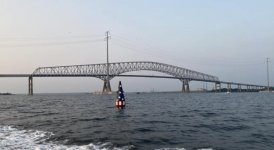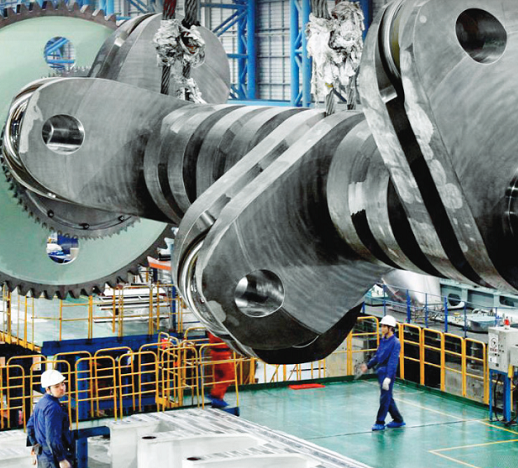I have a suspicion that folks (not you mariners, of course) generally don't have a feel for how massive these propulsion systems are. I did a bit of searching to try and give some perspective. Suffice it to say, when Cap'n Eddie says Crash Astern could shear a propeller shaft, he ain't kidding. This isn't the same as hitting reverse gear in a fishing boat.
There are three main manufacturers in the world of these monsters. I found a picture of the MAN facility in Germany which shows a
section of a precision forged and machined crankshaft. You can see the scale by the people under it.






